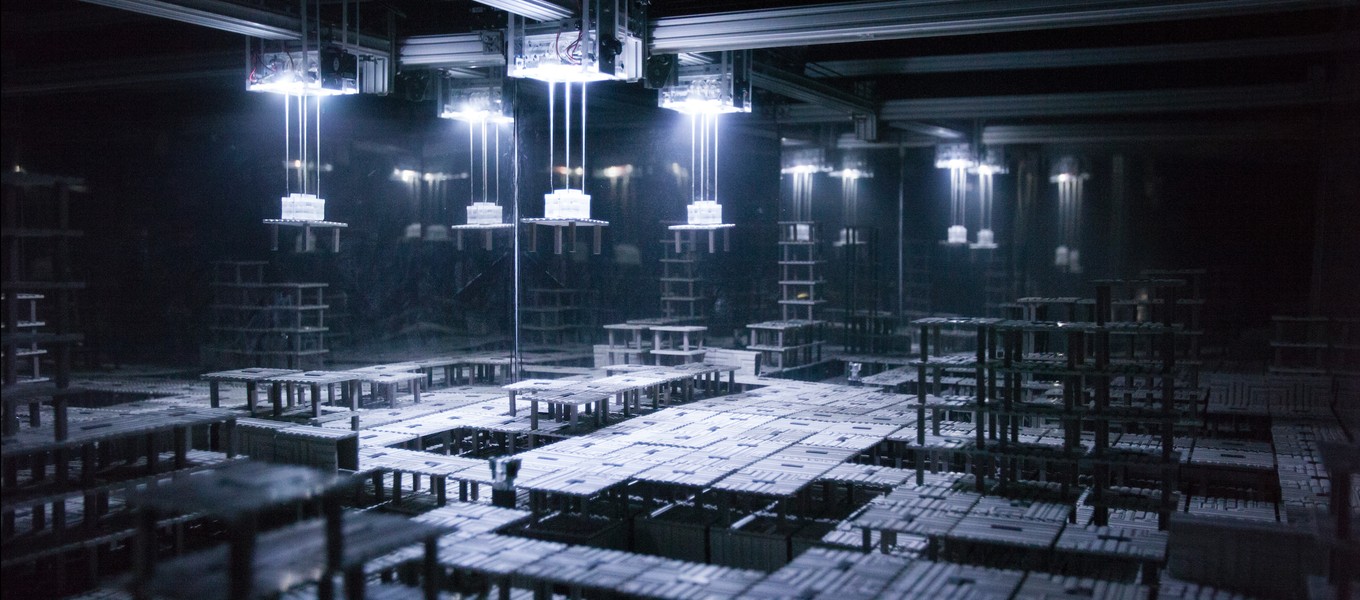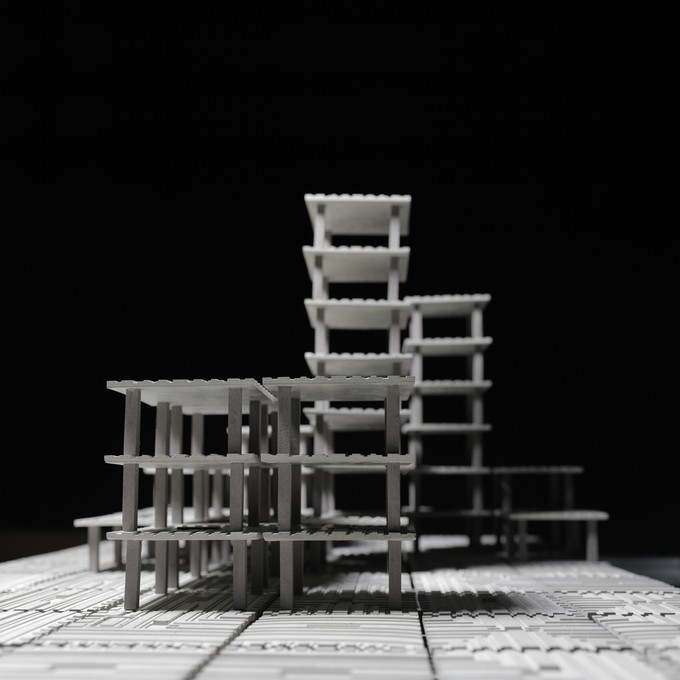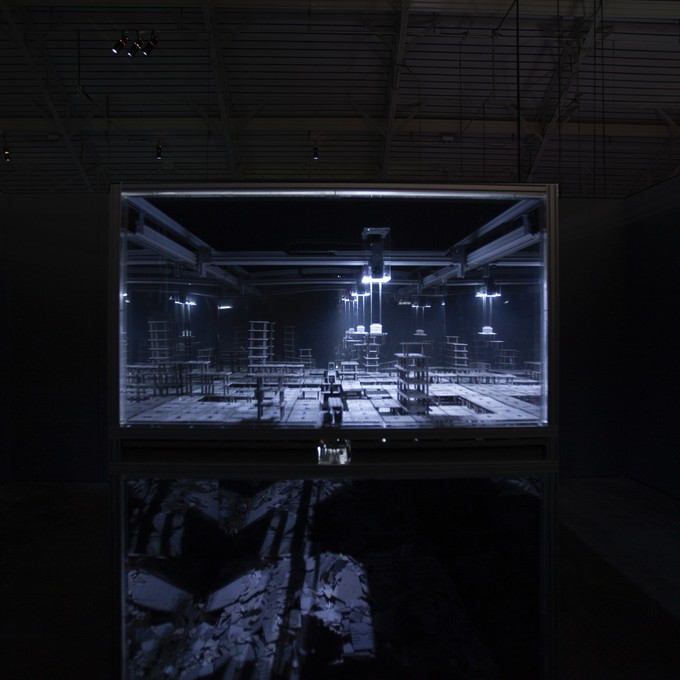Thomas Garnier
Cénotaphes - Installation - 2018
presented as part of the exhibition Panorama 20



Installation
A global phenomenon is there before you.
In the four corners of our world, buildings, districts and whole cities are growing up, built at dizzying speed. These buildings and places have no shared particularity, they do not fulfil any function and are abandoned, either eventually or at the very moment of their construction.
These buildings go directly from construction site to ruin, their reduced life expectancy earning them the names of “ghost cities,” “tofu buildings” or, quite simply, “instant ruins.”
Some time in the near future, this phenomenon gains in magnitude. The culmination of a new, increasingly fast building technique (derived from large-scale 3D printing) and the automatic standardisation of the repetitive elements in construction leads to a radical new way of considering the city, if it can still be called that. Automation and its continuous remodelling based on the principle of property speculation, the city continuously produces, assembles, disassembles and reassembles its
architectural elements in gridded concrete.
Looking down from the atmosphere, we can observe that certain sections of this infinite city have started to be transformed. Deserted from the very outset, it never pretended to have the slightest utility; it simply exists, like an invasive and aesthetic filling of the world. This anti-architecture is nothing more than the promise of a function, of an occupation that never happens,
the encounter of an illusion and a flow, of the manipulation of an abstract layer that covers us all.
Cénotaphes sets out to illustrate this dream of an urbanism with a mechanised installation that continuously assembles and dis-assembles sculptural elements in concrete.
This automated Sisyphus is accompanied by a video system that films the interior of the construction in real time and recomposes an infinite travelling shot within the entrails of this chimerical city.
Thomas Garnier
Thomas Garnier is a contemporary artist with a background in architecture. After gaining his state architectural diploma in 2016, he took a complementary training at Le Fresnoy - Studio National des Arts Contemporains.
His work is often classified as partaking of a new, post-digital Romanticism. It interrogates the essence of the local, history and the role of memory in the gradual institution of a globalised and desensitised world. His practice is like that of an artist/researcher or a heteropologue, as defined by Foucault in his text on heterotopias.
Production
Acknowledgments
Alain Fleischer, Éric Prigent, François Bonenfant, Julien Maire, Barbara Merlier, Luc-Jérôme Bailleul, Madeleine Van Doren, Daniel Dobbels, Nicolas Guichard, Stanislav Mercier Kurakin, Zeng Ye et le pôle Installations du Fresnoy.
